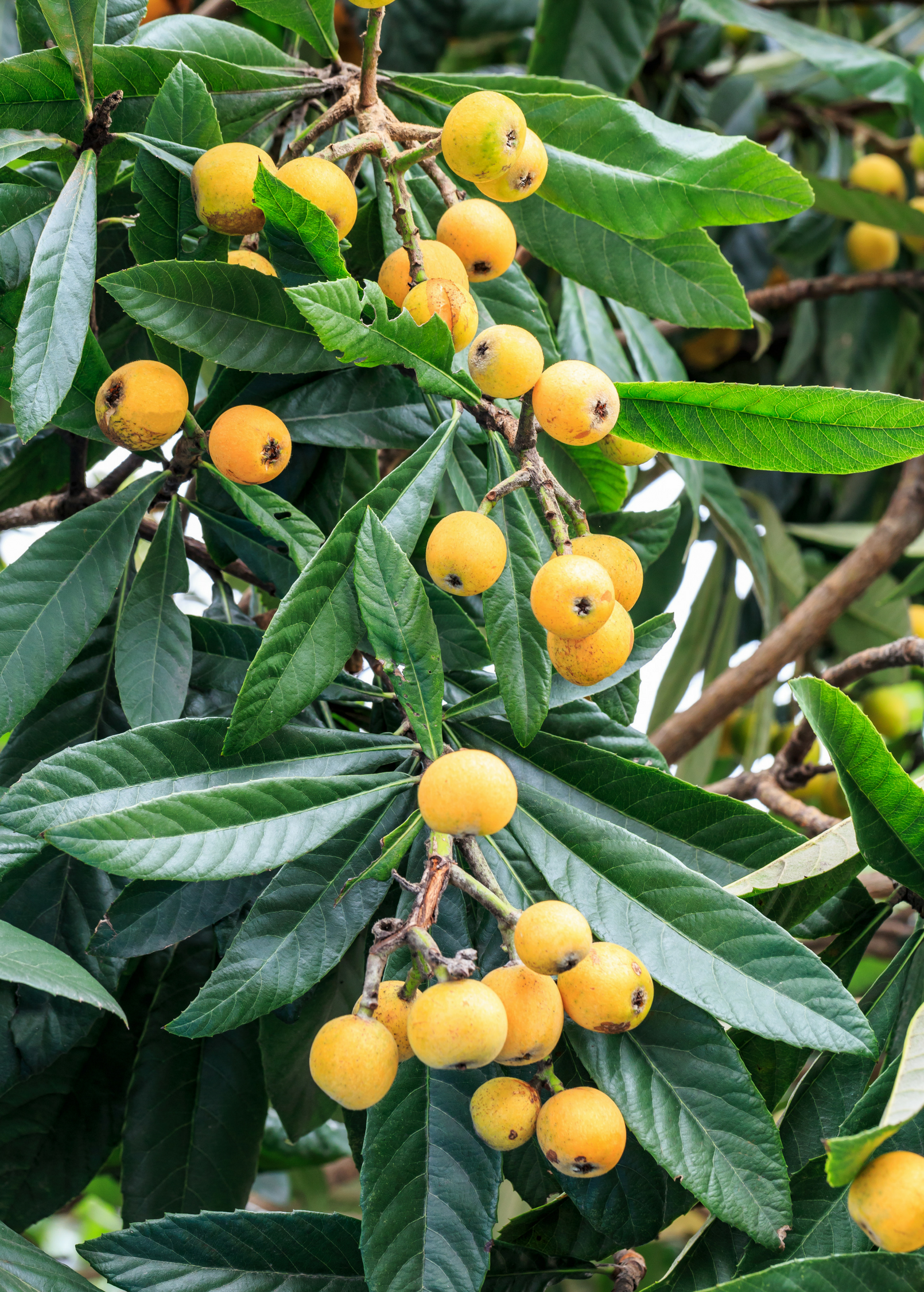
Loquat
Eriobotrya japonica
Basic Information
🌿 Family: Rosaceae🗺️ Zone: 8-10
Other Names:
- Japanese Plum
- Japanese Medlar
🌡️ Ideal Temperature : 60°F – 77°F
🔥 Heat Tolerance: Up to 95°F
❄️ Cold Tolerance: Down to 12°F
🌱 Type: Perennial
Layers
- Canopy
Functions
- Edible
- Wildlife Attractor
- Medicinal
- Pollinator
- Mulcher
- Erosion Control
- Animal Fodder
- Windbreaker
- Border Plant
Pests
Description
The loquat is an evergreen tree native to China, known for its attractive foliage and delicious fruit. It typically reaches a height of 3-10 meters (10-33 feet) with large, glossy, dark green leaves that add a tropical aesthetic to gardens. The tree produces fragrant white to cream-colored flowers in the autumn, which develop into small, pear-shaped fruits with yellow to orange skin and sweet-tart flesh.
🌞💧 Sun and Water Requirements:
Loquats thrive in full sun to partial shade. They prefer slightly acidic to slightly basic, well-drained soils and require regular watering, especially during dry periods. However, they are drought-tolerant once established.
✂️🫘 Methods to Propagate:
Loquats can be propagated by seeds or grafting. Seeds should be planted fresh, as they lose viability quickly. Grafting is preferred for maintaining desired fruit characteristics and can be done using methods like cleft, saddle, or chip budding.
🧑🌾👩🌾 When to Harvest:
Fruit ripens in late winter to early spring. Harvest when fruits are fully colored and slightly soft to the touch. Handle with care to avoid bruising.
Purpose
- **Edible:** The sweet-tart fruits are consumed fresh, made into jams, jellies, or fermented into beverages.
- **Wildlife Attractor:** Flowers provide nectar for pollinators; fruits attract birds and other wildlife.
- **Medicinal:** Traditional uses include treatments for respiratory issues and digestive ailments.
- **Pollinator:** Fragrant flowers attract bees and other pollinators, enhancing garden biodiversity.
- **Mulcher:** Fallen leaves decompose to enrich soil organic matter.
- **Erosion Control:** Extensive root systems help stabilize soil on slopes.
- **Animal Fodder:** Leaves and fruits can be used as feed for livestock.
- **Windbreaker:** Dense foliage serves as a windbreak, protecting other plants.
- **Border Plant:** Can be planted as a hedge or border due to its dense growth habit.